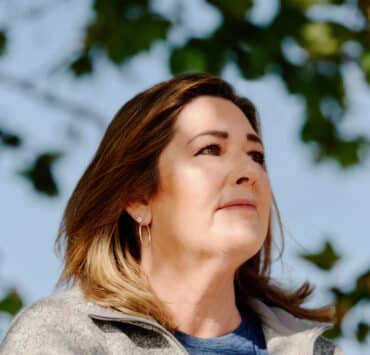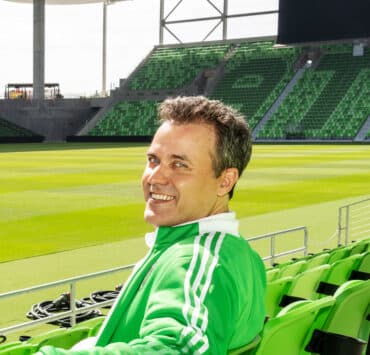|
Getting your Trinity Audio player ready...
|
Sam Raghavachari, senior vice president of enterprise solutions at the Howard Hughes Corporation, did not know much about the infamous Howard Hughes growing up in India. “I heard the name, but did not know his impact,” he says. “After I came to the United States, I learned more about him. He was so many things: aviator, movie producer, director, engineer, investor, and philanthropist. Despite that, it’s human nature for people to remember you more for your struggles and failures than your talent and what you have achieved.”
Raghavachari has been with Texas-based Howard Hughes Corporation for little over three years. He came to the United States in 1991 to pursue his master’s degree at South Dakota State University. Since then, his career took him to Cleveland, Milwaukee, and finally to Dallas—he does not miss the thirteen-degree temperatures, he jokes.
Real estate was not on Raghavachari’s radar growing up. His father worked for India’s largest life insurance company. But he does recall that in the medium-sized city in which his family lived, the tallest building was fourteen stories.
“It is important to bring people together in order to move forward, and here, fortunately, people want to move forward.”
Sam Raghavachari
“My father used to work in that building,” he recalls, “and when I was young, I used to take my friends to the top floor. I felt a lot of pride showing them the view of the city. That was my first ‘skyscraper’ experience. Little did I know at the time I would be working for the Howard Hughes Corporation, which builds these wonderful buildings and condos.”
The Howard Hughes Corporation owns, manages, and develops commercial, residential, and mixed-use real estate throughout the United States. Its assets include master planned communities and operating properties like the Seaport in New York City; the Woodlands, Bridgeland, and the Woodlands Hills in the Greater Houston area; Downtown Columbia in Maryland, Summerlin in Las Vegas, and Ward Village in Honolulu.
Raghavachari oversees applications and integrations teams for the ten-year-old company. “The most important part of my job is developing a strategy and plan to help execute on the business goals using technology,” he says.
The challenge is that many of the company’s existing assets were previously under different ownership before they were all brought together under the Hughes umbrella. The data in the various systems were several years old and data consistency was a challenge.
“The systems weren’t talking to each other,” Raghavachari says. “There was confusion on the source of truth, so it was important to design systems in a way to bring these data flows across systems and maintain that data consistency. Data integration is one of our biggest challenges in IT, and we are always looking for ways to improve the integration platform and enhance our talent base, so we are ready to face the future head-on.”
During his tenure, he says, IT has rebuilt the company’s cloud integration platform, which enables the building of connected systems across the organization; redesigned the entire leasing process on Salesforce, which further helped streamline the business process and maintain data quality across the platform; and helped implement Snowflake, the cloud-based data platform in partnership with the data analytics team.
“The Howard Hughes Corporation team exemplified collaboration,” says Dan Vonsover, vice president of industries for Fortimize. “With strong executive support, they partnered with Fortimize to build a robust Salesforce leasing solution. Sam was the glue of the project, balancing the business and technology while ensuring we all work in concert.”
“Being involved in sports taught me about making quick decisions, being persistent, and winning without compromising my values.”
Sam Raghavachari
Raghavachari credits partnership and communication in helping him achieve these and other goals. “When there is miscommunication, things will go wrong,” he says. “It is important to bring people together to move forward, and here, fortunately, people want to move forward. I aim to balance the fast-paced momentum with a thoughtful, well-designed system to make sure we are staying in-sync with one another and proceeding correctly.”
Another challenge in bringing different departments and stakeholders together, he says, is addressing resistance to change when things have been done a certain way out of habit. Raghavachari devised a strategy he calls, the three I’s: identify all stakeholders and clearly communicate how the new process will benefit them; involve early and don’t surprise anyone with a new system or technology; and introspect often to build consensus.
The important thing, Raghavachari emphasizes, is to pinpoint any problems, determine the different options for a solution, and identify the benefits of a particular solution.
Raghavachari credits playing competitive sports when he was young with instilling in him the necessary mindset to succeed in a forward-looking company such as Howard Hughes. “I always liked playing some form of sports,” he says. “I liked to be outside most of the time; if a friend asked me to play, I wouldn’t think twice.”
He recalls a time when he was running an errand and a friend asked him to shoot an impromptu game of hoops. “I did not have the right footwear and so ended up going barefoot. I remember how after thirty minutes, I was surprised by how my feet were so sore and covered in blisters. My commitment to sports taught me about making quick decisions, being persistent, and winning without compromise—values that continue to drive me today.
The COVID-19 pandemic has reinforced in Raghavachari that companies cannot take how they operated before for granted. “Prior to COVID,” he says, “real estate companies were looking to create spaces with a lot of meeting rooms. Now, companies are thinking more of hybrid models that allow for flexibility and adaptability as companies consider new options for remote collaboration.
“Executing an IT project now involves spending more time with the end-users early in the process to understand their requirements, viewpoints, concerns, and perspectives,” he continues. “Given the amount of remote working, user acceptance testing now requires more coordination between IT and users in order to ensure that systems are properly tested before approval.”
While Raghavachari admits he is not a fan of working 100 percent remotely, he believes the hybrid model warrants critical evaluation and expert solutions. “It gives you options,” he says.

